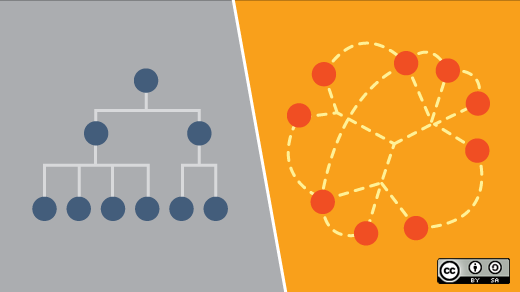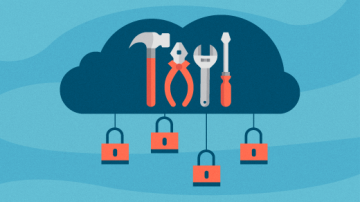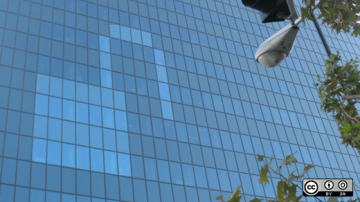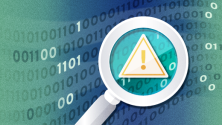Cybersecurity is no longer just the domain of the IT staff putting in firewalls and backing up servers. It takes a commitment from the top and a budget to match. The stakes are high when it comes to keeping your customers' information safe.
The average cost of a data breach in 2018 was $148 for each compromised record. That equals an average cost of $3.86 million per breach. Because it takes organizations more than six months—196 days on average—to detect breaches, a lot of remediation must happen after discovery.
With compliance regulations in most industries tightening and stricter security rules, such as the General Data Protection Regulation (GDPR) becoming law, breaches can lead to large fines as well as loss of reputation.
To build a cybersecurity solution from the top down, you need to build a solid foundation. This foundation should be viewed not as a technology problem but as a governance issue. Tech solutions will play a role, but it takes more than that—it starts with building a culture of safety.
Build a cybersecurity culture
"A chain is no stronger than its weakest link," Thomas Reid wrote back in 1786. The message still applies when it comes to cybersecurity today. Your systems are only as secure as your least safety-conscious team member. One lapse, by one person, can compromise your data.
It's important to build a culture where all team members understand the importance of cybersecurity. Security is not just the IT department's job. It is everyone's responsibility.
Training is a continuous responsibility. When new team members are on-boarded, they need to be trained in security best practices. When team members leave, their access must be restricted immediately. As team members get comfortable in their positions, there should be strong policies, procedures, and training to keep them safety conscious.
Maintain secure systems
Corporate policies and procedures will establish a secure baseline for your systems. It's important to maintain strict adherence as systems expand or evolve. Secure network design must match these policies.
A secure system will be able to filter all incoming traffic at the network perimeter. Only traffic required to support your organization should be allowed to get through this perimeter. Unfortunately, threats sometimes still get in.
Zero-day attacks are increasing in number, and more threat actors are exploiting known defects in software. In 2018, more than three-quarters of successful endpoint attacks exploited zero-day flaws. While it's difficult to guard against unknown threats, you can minimize your exposure by strictly applying updates and patches immediately when they're released.
Manage user privileges
By limiting each individual user's access and privileges, companies can utilize micro-segmenting to minimize potential damage done by a possible attack. If an attack does get through your secure perimeter, this will limit the number of areas the attacker has access to.
User access should be limited to only the privileges they need to do their jobs, especially when it comes to sensitive data. Most breaches start with email phishing. Unsuspecting employees click on a malicious link or are tricked into giving up their login credentials. The less access employees have, the less damage a hacker can do.
Identity and access management (IAM) systems can deploy single sign-on (SSO) to reduce the number of passwords users need to access systems by using an authentication token accepted by different apps. Multi-factor authentication practices combined with reducing privileges can lower risk to the entire system.
Implement continuous monitoring
Your security needs continuous monitoring across your enterprise to detect and prevent intrusion. This includes servers, networks, Software-as-a-Service (SaaS), cloud services, mobile users, third-party applications, and much more. In reality, it is imperative that every entry point and connection are continuously monitored.
Your employees are working around the clock, especially if you are a global enterprise. They are working from home and working on the road. This means multiple devices, internet accesses, and servers, all of which need to be monitored.
Likewise, hackers are working continuously to find any flaw in your system that could lead to a possible cyberattack. Don't wait for your next IT audit to worry about finding the flaws; this should be a continual process and high priority.
Conduct regular risk assessments
Even with continuous monitoring, chief information security officers (CISOs) and IT managers should regularly conduct risk assessments. New devices, hardware, third-party apps, and cloud services are being added all the time. It's easy to forget how all these individual pieces, added one at a time, all fit into the big picture.
The regularly scheduled, formal risk assessment should take an exhaustive look at infrastructure and access points. It should include penetration testing to identify potential threats.
Your risk assessment should also analyze backups and data-recovery planning in case a breach occurs. Don't just set up your security and hope it works. Have a plan for what you will do if access is breached, know who will be responsible for what, and establish an expected timeline to implement your plan.
Pay attention to remote teams and BYOD users
More team members than ever work remotely. Whether they are working on the road, at a remote location, or from home, they pose a cybersecurity risk. They are connecting remotely, which can leave channels open for intrusion or data interception.
Team members often mix company devices and personal devices almost seamlessly. The advent of BYOD (bring your own device) means company assets may also be vulnerable to apps and software installed on personal devices. While you can manage what's on company devices, when employees check their company email from their personal phone or connect to a company server from their personal laptop, you've increased your overall risk.
Personal devices and remote connections should always utilize a virtual private network (VPN). A VPN uses encrypted connections to the internet that create a private tunnel that masks the user's IP address. As Douglas Crawford, resident security expert at ProPrivacy.com, explains, "Until the Edward Snowden revelations, people assumed that 128-bit encryption was in practice uncrackable through brute force. They believed it would be so for around another 100 years (taking Moore's Law into account). In theory, this still holds true. However, the scale of resources that the NSA seems willing to throw at cracking encryption has shaken many experts' faith in these predictions. Consequently, system administrators the world over are scrambling to upgrade cipher key lengths."
A top-down cybersecurity strategy is essential
When it comes to cybersecurity, a top-down strategy is essential to providing adequate protection. Building a culture of cybersecurity throughout the organization, maintaining secure systems, and continuous monitoring are essential to safeguarding your systems and your data.
A top-down approach means your IT department is not solely focused on your company's tech stack while management is solely focused on the company mission and objectives. These are no longer siloed departments; they are interwoven and dependent on each other to ensure success.
Ultimately, success is defined as keeping your customer information safe and secure. Continuous monitoring and protection of sensitive information are critical to the success of the entire company. With top management on board with funding cybersecurity adequately, IT can ensure optimum security practices.










1 Comment